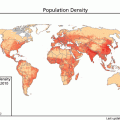Classification: ICD-9 063; ICD-10 A84.0, A84.1
Synonyms: TBE, Western, European or Central European tick-borne encephalitis, Siberian tick-borne encephalitis, Far Eastern tick-borne encephalitis (formerly known as Russian Spring Summer encephalitis), diphasic milk fever, diphasic meningoencephalitis
Agent: Tick-borne encephalitis (TBE) virus, an enveloped RNA virus with three subtypes: European (EUR), Siberian (SIB), and Far-Eastern (FE).
Reservoir: The only real reservoir is the tick. Viremia persists only for a few days in transmission competent vertebrates, rodents (mainly Apodemus spp.). Deer, birds, possibly marmots are not competent to transmit to ticks.
Vector: Hard ticks, with Ixodes ricinus as the most important vector of the European subtype and I. persulcatus for the other subtypes.
Transmission: Via tick bite. Or consumption of raw milk or dairy products from infected animals. For EUR, rarely, by blood transfusion and breast milk.
Cycle: Wildlife–tick–wildlife. The tick ingests infected blood of reservoir host, virus passes from gut to hemocoele to salivary glands and is transmitted to a new host at the next feed. The virus is transmitted from tick to tick trans-stadially and transovarially. Trans-stadial transmission is key to tick-borne infections.
Stay updated, free articles. Join our Telegram channel

Full access? Get Clinical Tree




